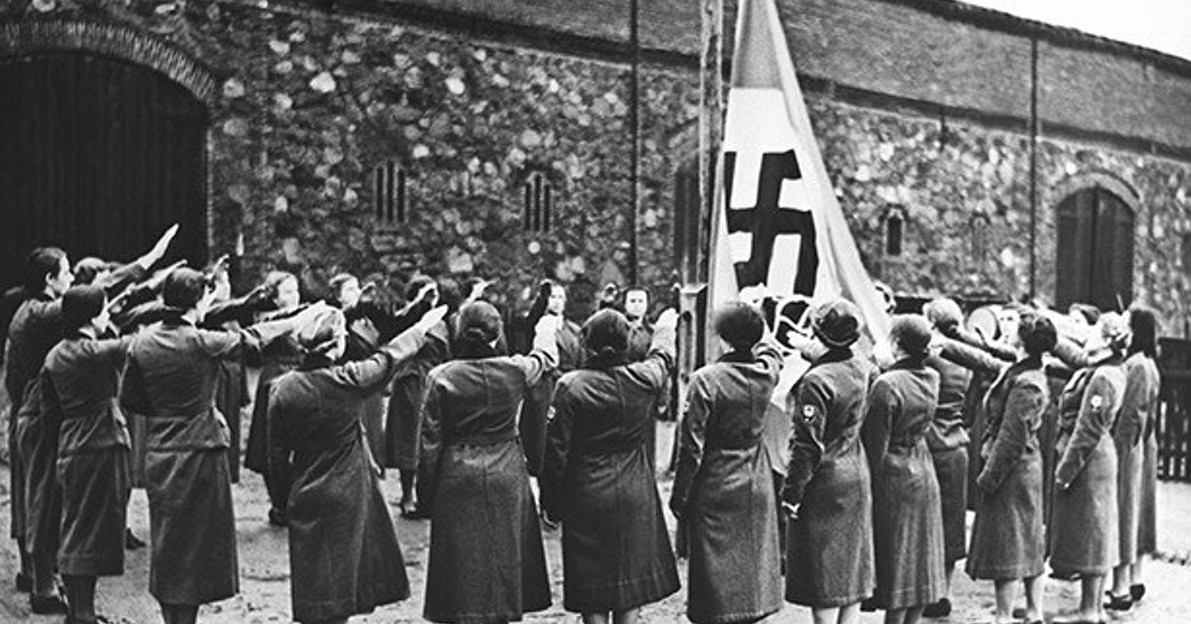
“I Was a Nazi, and Here’s Why”.
In recent years, many victims of violence have written memoirs in which they seek out and confront the perpetrators who harmed them. The opposite is rare. Few perpetrators seek out their victims, let alone write books about them. But fifty years ago this month, Melita Maschmann, a former Nazi, published just such a book.
“Fazit,” which was translated as “Account Rendered” in 1964, is the memoir of a woman who, as a fifteen-year-old and against her family’s wishes, joined the Hitler Youth. Before and during the Second World War, Maschmann worked in the high echelons of press and propaganda of the Bund Deutscher Mädel, the girls’ section of the Nazi youth organization, and, later, she supervised the eviction of Polish farmers and the resettlement of ethnic Germans on their farms. Arrested in 1945 at the age of twenty-seven, she completed a mandatory de-Nazification course and became a freelance journalist.

Soon after her release from internment in 1948, Maschmann wrote a letter to a Jewish former classmate with whom she had the kind of passionate friendship common among adolescent girls. She didn’t know if her friend had made it out of Berlin before the war, or if her mother (whose address she had obtained) would pass the letter on. “I don’t know if it reached you,” the author writes. “Since then I have often continued my conversation with you, awake and in dreams, but I have never tried to write any of it down. Now, today, I feel impelled to do so. I was prompted to this by a trivial incident. A woman spoke to me in the street and the way she held her head suddenly reminded me quite strikingly of you. But what is the real reason which made me sit down and write to you as soon as I came in? Perhaps in the intervening years I have, without being aware of it, prepared an account within me which must be presented.”
“What I hope, dare to hope, is that you might be able to understand—not excuse—the wrong and even evil steps which I took and which I must report, and that such an understanding might form the basis for a lasting dialogue.”
Maschmann elaborated on her purpose to Hannah Arendt in 1963, in a letter that expressed her desire to help former Nazi colleagues reflect on their actions, and to help others “better understand” why people like her had been drawn to Hitler.
“Account Rendered” appeared at a time when Arendt’s phrase “the banality of evil” was making its way into public conversation, and while the West German parliament was debating the statute of limitations on crimes committed by Nazis.
In Germany, the book went through eight editions (the last in 1987) and was added to high-school reading lists in some school districts. It became part of Germany’s private, public, and scholarly debates over its own history. Historians of the Nazi period—Daniel Goldhagen and Claudia Koonz, among others—used “Account Rendered” as a primary source.
Soon after the book’s publication, its author effectively disappeared from public view. She had found a guru, Sri Anandamayi Ma, a woman venerated as a “living saint,” in India. Maschmann took a Hindu name, lived in Indian ashrams, and returned to Germany only on brief family visits every two or three years.






